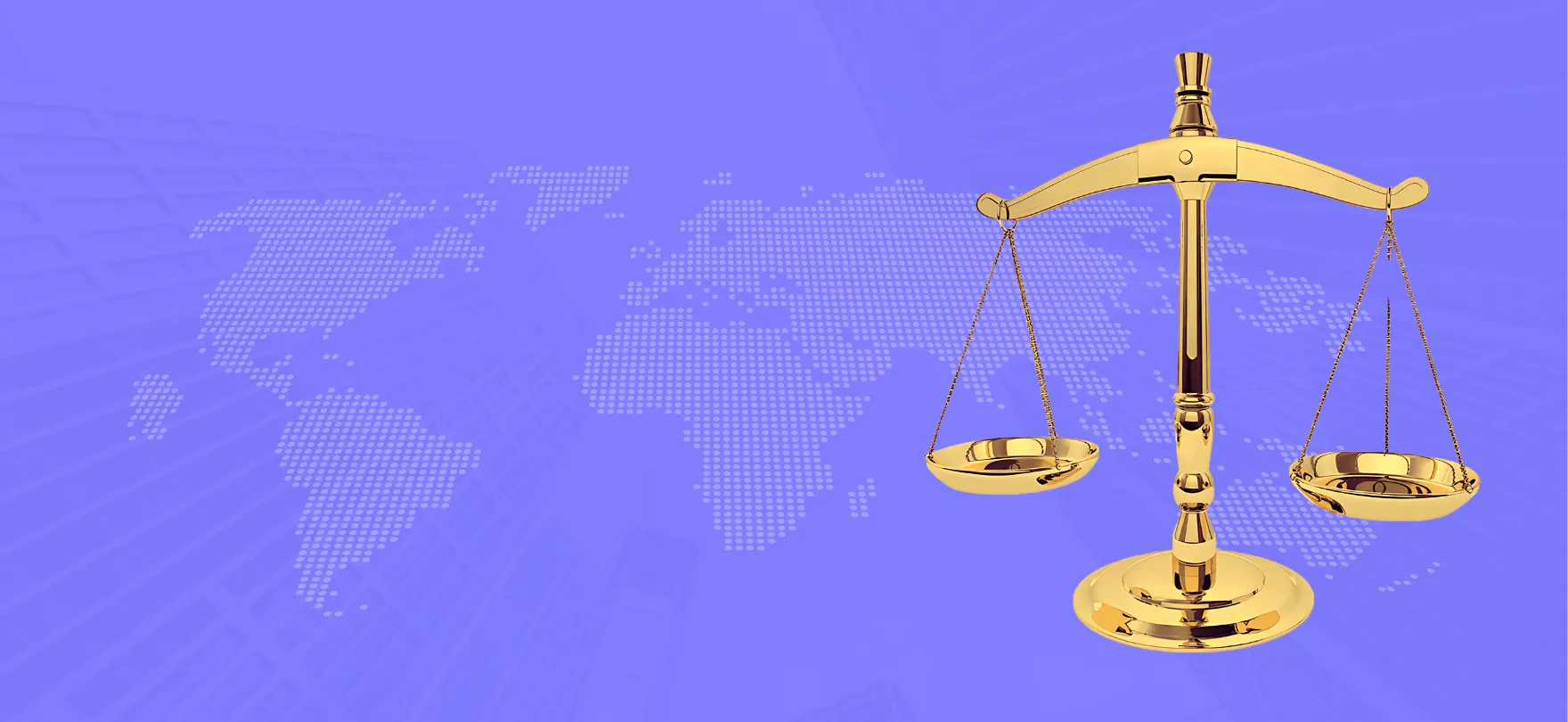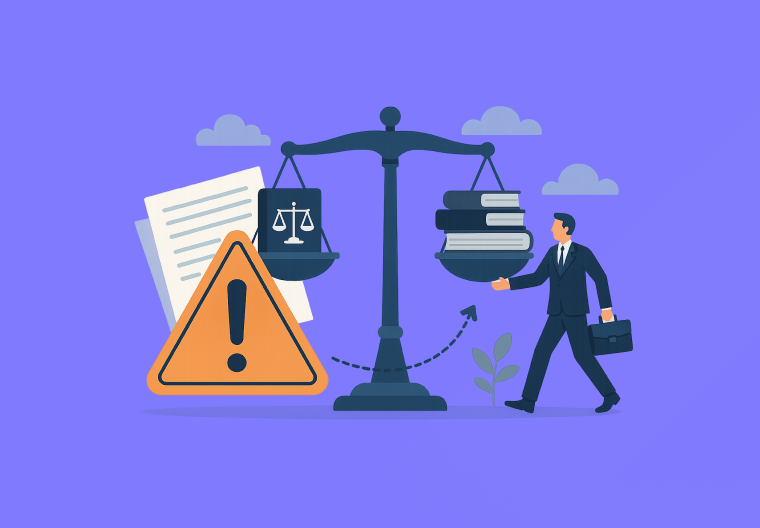
Compliance Conundrums: The Top Challenges MLROs Face in a World of Ever-Shifting Regulations
In 2017 Deutsche Bank was fined $630 million for their involvement in a $10 billion money laundering conspiracy involving Russians. This is a clear depiction of how important MLROs are to protect financial institutions from money laundering and terrorist funding. Entrusted with creating and revising AML/CTF guidelines, they also evaluate risks, educate personnel (e.g., HSBC staff underwent training following a $1.9 billion fine for inadequate AML controls in 2012), and oversee the suspicious activity report. They communicate with regulatory bodies such as the Financial Action Task Force (FATF), which establishes global standards and maintains important records. They also oversee routine AML/CTF audits, keep an eye on legislative modifications, counsel upper management on compliance-related issues, and provide program performance reports. The 2018 Danske Bank scandal, which involved transactions that appeared suspicious totaling about €200 billion, highlights how urgent these responsibilities are.
The complexity of contemporary global finance has increased the importance of this fundamental role. For example, the popularity of cryptocurrencies has made rigorous AML checks necessary. Globalization, well-publicized banking scandals like the one mentioned above, more stringent regulations following the 2008 financial crisis, technological advancements like blockchain, and growing public awareness of money laundering thanks to exposés like the Panama Papers have all contributed to the demand for greater transparency and accountability from financial institutions by regulators and the general public. European banks were fined more than $16 billion for money laundering violations alone in 2018. In this changing context, the MLRO becomes more than just a compliance officer—rather, a vital defender of an organization’s integrity and standing—while deftly maneuvering a complex legal framework in the face of increased scrutiny of international money flows.
Let us see what challenges in the regulatory landscape do MLROs encounter.
Fragmented Regulatory Landscape:
Multiple Jurisdictions:
AML rules are a collection of guidelines and practices designed to stop criminals from disguising money they have gained unlawfully as legitimate earnings. Based on where they operate, a worldwide organization may be subject to numerous, often competing sets of AML requirements. Think of a multinational bank that conducts business in the US, the EU, and Hong Kong. A bank of that kind would have to navigate and abide by the regulations set forth by the Hong Kong Monetary Authority, the AMLD in the EU, and the BSA in the United States, among others. This is a significant effort that calls for advanced compliance systems. Consequently, these entities require a “compliance matrix,” which is simply a sophisticated system or grid that aids in monitoring and adherence to various rules across several countries.
Rapid Regulatory Evolution:
Regulations are dynamic; they change in reaction to new dangers, shifting social demands, advancements in technology, and other variables. Regulations can change quickly, particularly in the financial industry. The European Union was working on its 6th AML Directive (6 AMLD). This quick progression—from 4AMLD in 2015 to 5AMLD in 2018, and finally 6AMLD—highlights how AML laws are dynamic and adapt to new threats.
Staying compliant for businesses involves more than simply knowing the laws as they stand; it also involves monitoring any changes to the regulations. Adapting to these changes quickly makes it harder for organizations to stay relevant. To be compliant, they must not only be aware of these shifts but also adjust their business models, personnel training programs, and internal processes. Neglecting to comply with this might result in severe fines or legal consequences.
It’s also important to see how the digital and technological transformations are posing challenges for MLROs in terms of regulations.
Digital and Technological Transformations:
New Platforms:
FinTech companies, which provide services ranging from peer-to-peer lending and mobile banking to financial robo-advisors, have proliferated during the last ten years. In contrast to traditional banks, these companies primarily communicate with their customers using digital interfaces. While efficiency and the user experience are improved by this “digital first” approach, it also presents opportunities for malefactors to take advantage of the system and use it for illegal financial operations. Once a rising star in the German fintech industry, Wirecard declared bankruptcy in 2020 after admitting that the €1.9 billion claimed to have been placed in two banks in the Philippines was a hoax. This controversy brought attention to the necessity of more robust checks and balances, especially in innovative digital platforms.
Cryptocurrencies and Digital Assets:
Cryptocurrencies employ blockchain technology to function on decentralized networks. Peer-to-peer transactions are ensured by this decentralization, eliminating the need for middlemen like traditional banks. The lack of a centralized authority, the anonymous characteristics of some coins, and the international scope of transactions might pose difficulties for regulatory organizations in monitoring and managing any money laundering or financing of terrorism operations. For example, because of its seeming secrecy, the notorious Silk Road marketplace—which functioned on the dark web—used Bitcoin for illegal transactions. Before it was shut down in 2013, the portal helped sell drugs for over $1 billion. The situation is made worse by the emergence of decentralized finance (DeFi) platforms, which mimic conventional financial products like interest-bearing accounts and loans but function beyond the established regulatory framework. For instance, users in the DeFi area may lend and borrow money without the use of conventional middlemen thanks to the MakerDAO platform. The Total Value Locked (TVL) in DeFi as of 2022 was $14 billion, indicating how quickly these platforms are being adopted.
The way crime is now evolving presents a huge challenge for MLROs. Let’s read through.
Evolving Financial Crime Tactics:
Sophistication of Laundering Techniques:
Placement, layering, and integration were the three distinct steps in the traditional money laundering process. However, money launderers have developed creative techniques to cloud the issues as a result of the digitization of financial institutions.
As an illustration:
Trade-Based Money Laundering: To transfer money illegally, this technique entails over or under-invoicing products and services. For example, a business may claim to be selling items valued at $1 million overseas while they are only valued at $100,000. In essence, the remaining $900,000 is laundered. For instance, in 2007 Mexican-Chinese businessman Zhenli Ye Gon was apprehended for money laundering through the use of real estate and casinos in the United States to inflate the value of imported pseudoephedrine from China and India to Mexico.
Use of Shell Companies: To hide the real source of funds, criminals frequently create fictitious companies that only exist on paper. These businesses can carry out “legitimate” operations to combine illegal and legal funds in areas with weak financial regulation. For example, the Panama Papers leak exposed the use of shell corporations, sometimes in covert nations, for potential money laundering and tax fraud.
Electronic Payment Methods: Money may be transferred quickly between accounts via online payment systems, often with little control, making it more difficult to track down. For instance, in 2013 U.S. authorities closed down Liberty Reserve, a digital currency network that was founded in 2006, for allegedly laundering $6 billion worldwide.
Cross-border Challenges:
Because contemporary finance is global in scope, money launderers can take advantage of discrepancies in foreign legislation.
As an illustration:
Havens for Banking Secrecy: Certain regions are notorious for having strict banking secrecy regulations, which make it challenging for outside parties to get account information. In order to hide their source, money launderers sometimes deposit illicit funds at banks in various jurisdictions. For example, the privacy protections offered by the Cayman Islands have long attracted the attention of people and organizations.
Distinctive Regulation Frameworks: One tactic used by money launderers is to transfer money through nations with laxer anti-money laundering laws. They can “clean” the money in this way before transferring it to areas with more stringent regulations.
We have deeply understood the critical conundrums that MLROs now frequently face. Let’s now see if these challenges can be overcome.
Integration of New Compliance Technologies:
Seamless Integration:
An MLRO values every second of their life. The implementation of novel technologies such as artificial intelligence (AI) in transaction monitoring need not disrupt current workflows or cause any downtime. A smooth integration guarantees that activities carry on as normal and that routine compliance reports and audits are not suspended. Moreover, data is the foundation of financial institution compliance. It’s important to make sure that previous transaction data is kept, consistent, and uncompromised when integrating new tools, since it can be essential for investigations and reports. Furthermore, MLROs would prioritize providing their staff with training on each new technology so they are fully capable of using it without any problems. Due to noncompliance, Societe Generale was fined $1.3 billion in 2018, emphasizing the importance of adequate supervision and training. A seamless transition is necessary to allow staff members to adapt without confusion, which might result in mistakes.
Dependence vs. Oversight:
Technology, particularly artificial intelligence (AI), is not perfect, but it can scan large volumes of data rapidly and spot potentially dangerous trends. MLROs are aware that these instruments ought to support human judgment rather than take its place. For example, depending on predetermined parameters, an AI may flag a transaction as suspicious, while a human eye may see it as a routine transaction for a certain long-standing client. In a similar vein, MLROs respect people’s capacity for context understanding, particularly in complicated circumstances. An experienced compliance officer could see a sudden large transaction as a legal sale from a corporate customer during a busy season, even though software would flag it as questionable. It’s also critical to remember that an excessive dependence on technology without human supervision may make it difficult to identify some illegal activity.
Stakeholder Communication:
Timely Reporting:
Within their institutions, MLROs are the first line of defense against financial crimes. In order to guarantee a prompt reaction and, if necessary, additional investigation, regulatory organizations frequently impose stringent deadlines for reporting suspected actions. This implies that MLROs need to have procedures and systems in place that enable them to quickly recognize and report suspicious transactions. The financial institution may face serious consequences for missing a deadline, including fines and harm to its image. Fenergo reports that global fines for non-compliance with sanctions, AML and KYC topped $36 billion in 2019. Many of these fees are attributable to delayed or undetected suspicious transactions. In addition to the immediate consequences, authorities may view the institution as having loose compliance standards, which might result in future inspections being more intense.
Maintaining Comprehensive Records:
The appropriate documentation of transactions, client data, and internal procedures is crucial to many AML regulations. This entails developing and maintaining an organized record-keeping process that gathers all relevant information for MLROs. Every day, millions of transactions are handled by larger financial organizations. MLROs in these kinds of organizations may find it difficult to manage and keep up with such large amounts of comprehensive records. Deutsche Bank faced criticism in 2019 for its AML procedures, particularly in data management, which caused delays in giving authorities access to transaction data. This difficulty highlights how crucial it is to have reliable data management systems and skilled staff to guarantee consistency. Keeping thorough records isn’t only necessary for regulatory compliance. For MLROs, past transaction data can offer insights into trends, helping identify new typologies of money laundering or assessing the effectiveness of current monitoring systems.
Money Laundering Reporting Officers (MLROs) face increased stakes in today’s complex financial environment, but they also have a critical role to play in protecting financial institutions from terrorist funding and money laundering. In addition to establishing AML/CTF procedures, educating staff, and communicating with regulatory agencies, they must also navigate a variety of international legislation, adjust to rapidly changing policies, and comprehend the techniques used by financial criminals as they evolve. To successfully address these issues, MLROs must exemplify flexibility, innovation, and teamwork. Navigating the compliance tunnel requires stressing these characteristics. They also need to interact with stakeholders expediently, keep perfect records, and integrate new compliance technology. In light of these challenges, there’s a pressing need for greater global regulatory harmonization to assist MLROs in their mission to safeguard financial systems and AML Watcher plays a huge role in doing so.
Contact us today to stay ahead of evolving challenges in the domain of compliance.
We are here to consult you
Switch to AML Watcher today and reduce your current AML cost by 50% - no questions asked.
- Find right product and pricing for your business
- Get your current solution provider audit & minimise your changeover risk
- Gain expert insights with quick response time to your queries




